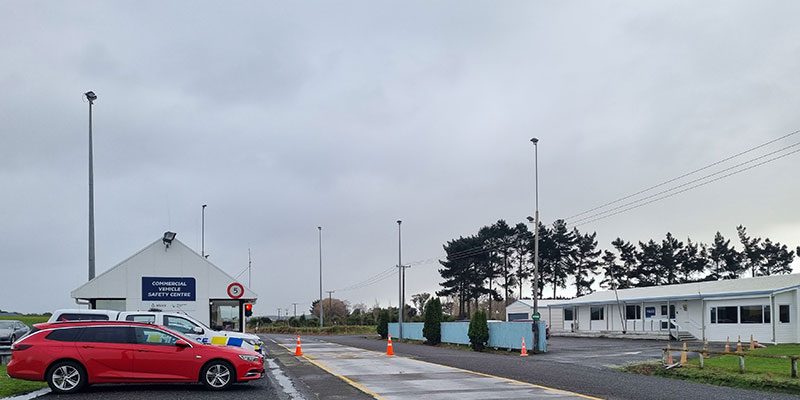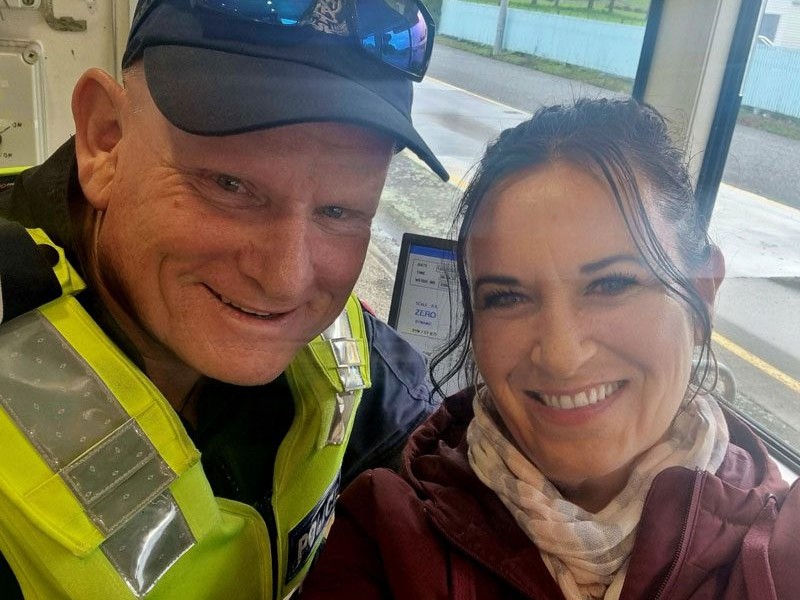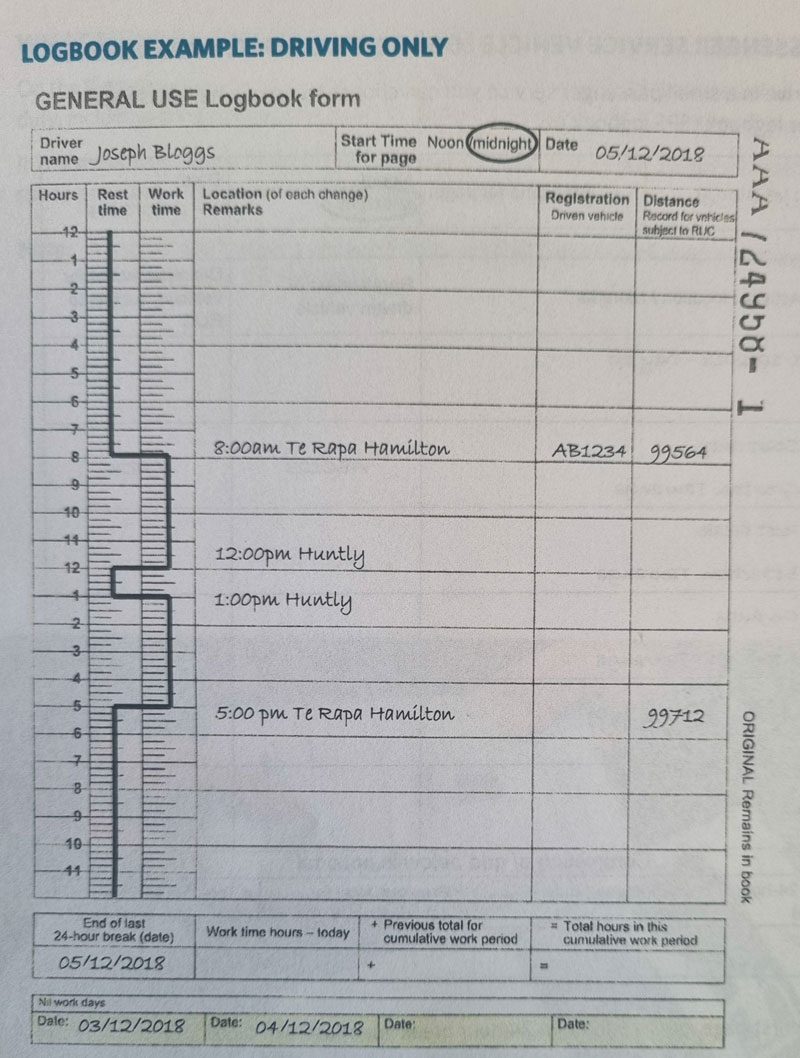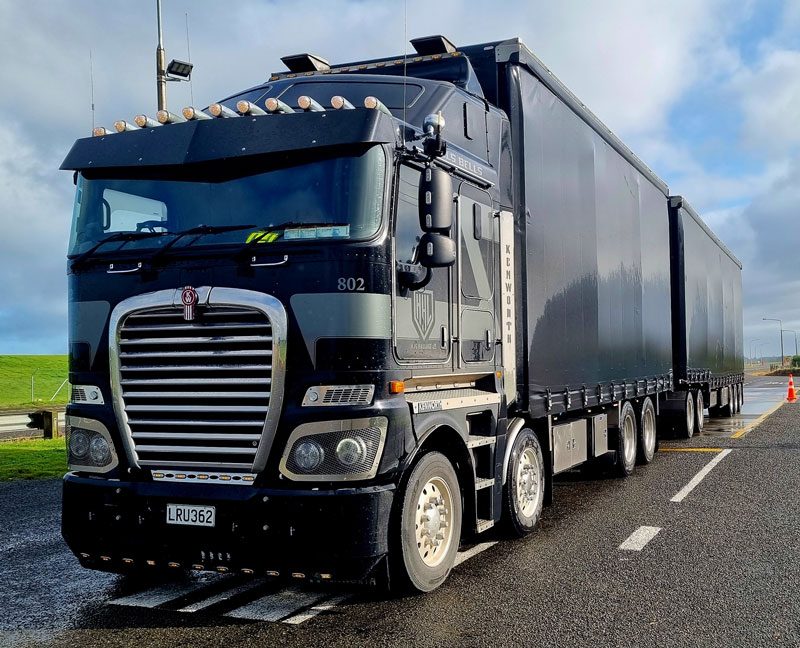We spend a day at the Compliance and Safety Centre with Senior Constable Ian Deane and the team at Ohakea.
Keeping our trucks and drivers safe is a very important part of our job, says Senior Constable Ian Deane. Ian used to drive trucks but decided in 1997 to join the New Zealand Police Force and has been attached to the Commercial Vehicle Inspection team for the last 14 years. He joined to help people, and enjoys the flexibility of the job and the relationships he has built with truck drivers over the years. This shows as I see them go through smiling, waving, and some even stopping to chat.
One of Ian’s teammates, Constable Barry Vinten, was already at the office when I arrived and the “All Trucks Stop“ sign was on letting truck drivers know to pull in on their way past for a quick weigh check to ensure they are travelling safe and within the requirements of the law.
If all is well, it is a very fast process where they drive up to the red light by the office where the scales are and drive over. The weight is logged on the computer inside so the constables can check details. If everything looks good then the driver gets a thumbs up, the light turns green, and the driver carries on with his day.

If there is an issue, the driver is asked to pull over and the constable will look further into the matter and if needed fill out a commercial vehicle inspection report.
Senior Constable Deane turns up with cookies and milk! We have a cuppa and talk about some of the things they do.
Weighing the trucks is important as there are limits to how much they can carry safely. Without going into too much detail, they have a list of different axle sets and lengths of vehicles that determine how much each vehicle can carry. For example: an 8 axle truck could carry 46 tonne gross weight, or a 9 axle truck could carry 50 tonne gross weight (with a permit it could carry up to 58 tonne).
But there is more to a Commercial Vehicle Safety inspector than just weighing the trucks. They also check for vehicle defects, things that may be broken or need replacing. The safety of the vehicle can include things like tyres, lights and suspension. Then there is vehicle fitness, they check to see that they are up to date with registration and road user fees and that it has a current COF (certificate of fitness) – this is a safety check done every six months to ensure everything on the truck is working properly. Dangerous goods are another thing that may need checking. Making sure the load is secured/loaded properly. And logbooks, these are a documentation of the hours a driver works with compulsory break and stop times to ensure they get rest and don’t work too long and get too tired. A truck driver can legally drive up to 70 hours in one week. That’s a lot of time trucking! They can work no more than 14 hours in one day including two half hour breaks where they can eat a meal, stretch their legs and have a breather. They must then have at least a 10 hour rest/sleep period. Once 70 hours is worked, they are required to have a minimum of 24 hours off work.

Truck drivers have huge responsibilities, and it is the duty of our Commercial Vehicle Inspection Officers to ensure they are doing their job safely, securely and legally. They are also there to help. Because they are very knowledgeable in their area of expertise drivers, truck owners/operators etc can call on them to answer any questions or enquiries regarding the legal aspects of their work.
There are around 12 Compliance and Safety Centres around New Zealand, and multiple more weigh pits where the officers use portable scales. All weigh bridges are calibrated 12 monthly. This means they are carefully assessed, set and/or adjusted. This is to make sure they are accurate and give correct readings.
Located across from the weigh bridge office are the Highway Patrol (Road Police) and administration offices. Today I saw two of these police officers called away because a truck had veered off the road. Their job is to assess the scene/ area and see what factors may have contributed to this happening and write up a report.














